Aging Gardens
of
Joe Landsberger
Saint Paul, Minnesota
Home and Garden
Overview
Perennials in
April |
May |
June |
July |
September
Through the months:
Ground covers |
Shrubs |
Trees |
Houseplants |
Installations and art |
Maintenance |
West End Neighbors
Garden and History Tours
Kiosk: Guides for learning
A free educational service
Virtual Tour of the Leech Goodrich
Artistic Installations:
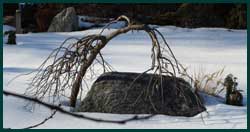
2020:
Winter's weeping redbud with massive boulder
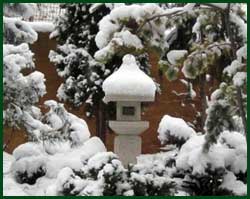
2004:
Oribe Lantern:
First produced in the Momyana period by warlord Furuta Oribe, oribe lanterns are among the oldest Japanese garden lanterns known. The stone lantern is a classic representation of a "planted" style for they do not have a base at the bottom. The oribe lantern has a carved Buddha at the base of the lantern and often thought to be a praying missionary, thus sometimes it is referred to as the "Christian" lantern
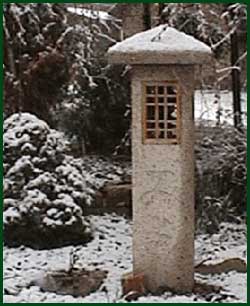
2000:
"Miyoshi" みよし Lantern
Named after its creator, is carved in the face of this elegant granite lantern. This is a classic ikekomi-gata (buried) style Japanese lantern. The lantern has two window openings, one on the front and one in the back. Small moon shaped windows grace the other two sides. Each year, despite night illumination, a bird attempts to build its nest out of twigs.
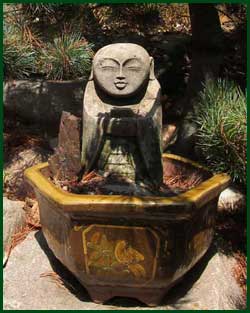 2004:
Ksitigarbha Bodhisattva (Jizō Bosatsu, 地蔵菩薩)
2004:
Ksitigarbha Bodhisattva (Jizō Bosatsu, 地蔵菩薩)
Outside of Japan, Jizo is known as Ksitigarbha (from Sanskrit), and he is a Bodhisattva or a practitioner of Buddhism who has deferred their own enlightenment to help others along the path. As a guardian of travelers, small statues of Jizo can be found alongside roads or at temples.
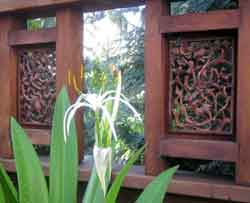
1999: Chinese carved panels with Crinum-(lily) asiaticum
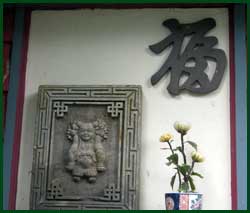 1999:
Good Fortune
1999:
Good Fortune
福,
the
character for good fortune or luck.
I bought the stone carving in Beijing in 1999. The Chinese characters mean "good fortune". The character for good fortune consists of the radical for auspicious or heaven sent to the left. The right-hand symbol represents a full container and is an ancient form from "oracle bones".
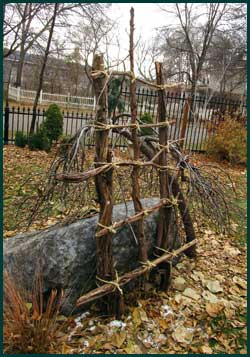
2019 Rustic trellis built from deceased cedar
with hand-tied
Japanese knots
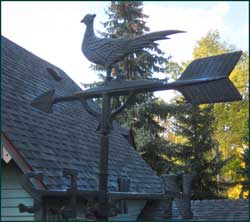
1998 Weathervane
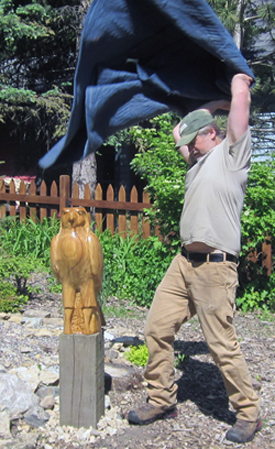
Horace/Sokol/Falcon
We had Horace the Falcon carved and installed by Curtis Ingvoldstad. "Horus" is an Egyptian deity--late Predynastic period through to Greco-Roman times. "Sokol", the Czech work for falcon, represents my affiliation with Czech and Slovak Sokol Minnesota (1882), the international fitness society founded in 1862.
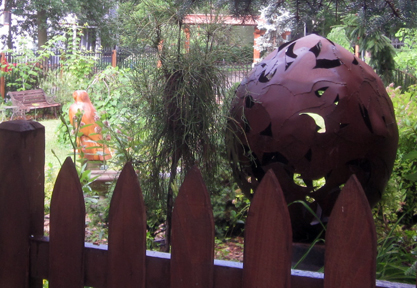


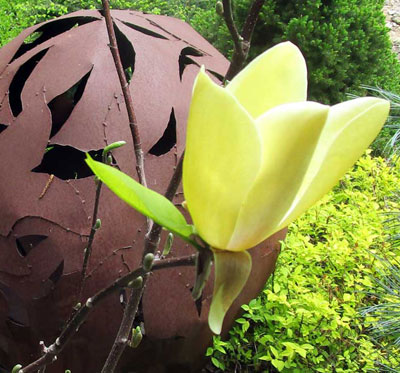 The
greatest gift of the garden
The
greatest gift of the garden